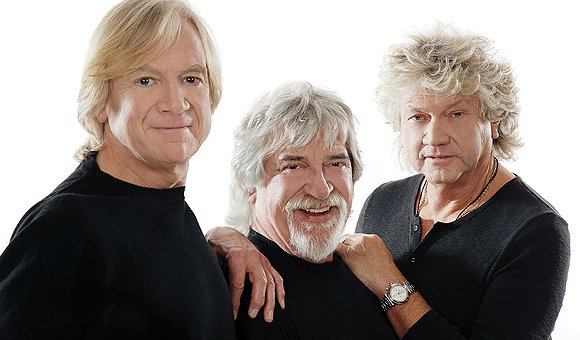Justin Hayward Q&A - Real Fame is What Elvis had...
Justin Hayward checked in with MBT from the current tour in UK/Amsterdam. Read what Justin has to say...
1. Will the Blue Jays quad tapes be released on a modern remastered surround format like the first seven albums were? A. I have not seen or heard the tapes, as they belong to Universal. But I will ask them. I hope that they, in turn, will ask me and Alberto to do the 5.1. It depends if they want to release it or not. I had forgotten that there was a Blue Jays live too. Universal would have first call on that as well, and I have no idea where it is, but I will do my best to follow it up and at least listen to it. 2. Have you ever experimented with slide guitar techniques? A. Yes I have, like every other guitar player, and it is on a couple of our recordings. George did the best slide sessions I heard in the mid/late Beatles days. It’s always fun to mess around with, but unless you are really good it’s best to leave it alone (on serious recordings) and stay with your own style. 3. Could you give us your thoughts about the use of effects pedals (less is more?), and what ones have you used over time and now? Is an MK II Tonebender in your arsenal? A. They can be great. I have only ever used two on stage – a Korg and the Boss/Roland, but I use my studio sounds that have been transferred from recordings in Italy. I have not used the presets. In effect it’s reproducing personal studio amps and processors. I never used any effects pedals in the 60’s and 70’s on stage. 4. Specifically, what did you use in the studio to create your fuzz tone on "The Story In Your Eyes," and how does that compare to how you play it on stage today? A. It’s a Marshall mains fuzz/reverb unit that was made in the 60’s. I have never seen another. The rhythm electric guitar is just my 335 through the normal channel of my old AC30 turned full up. 5. Do you still have your Elpico amp? A. Sadly no. I took it to bits when I was a kid to try and make it louder, and when I couldn’t I just bought a louder amp! 6. How did you achieve your tone on the recordings of "Blue Guitar," "This Morning," "Land Of Make Believe," "I'm Just A Singer," and "Isn't Life Strange?" A. The sound at the beginning of Blue Guitar is my 335 through an MXR compressor straight into the desk. The rest are either one of the sounds mentioned in question 4. 7. You seem to have a very delicate and sparing touch with the whammy bar, what's your feeling about the use of this? A. I always thought it was called a tremolo arm – and I think they are a (kind of) sound dimension worth having on a guitar, as long as you can keep the guitar in tune. I like them. 8. Does the new Tom Anderson guitar have a tailpiece? Could you please display a photo of your new 'friend' on your website? A. No is the answer to part one (but it does have a Strat type tremolo), and ‘maybe’ to part two - if I can get a nice pic of it. 9. The Bigsby tailpiece on your 335, how important do you feel that is to the sound of that one? A. Umm? 10. What is reacting that bends the note when you hit the butt-end of the 335 during your solo for "I'm Just A Singer?" A. You keep the fingers still and move the guitar. 11. What guitars were used on the intro to "The Swallow?" A. I used only one - my Gibson J200 12. Were you surprised at the more demonstrative audiences in the UK on this recent tour? A. It has been really great. 13. What made you decide to play the Farfisa at the start of "The Day We Meet Again?" A. It’s the same Farfisa sound that I played on the recording. Nothing else sounds quite like that. 14. How did the Dino Shuffle during "The Story In Your Eyes" get started, and do the band call it that also? A. I remember it as being Lisa and Wendy’s idea. We’ve never called it anything. 15. Who designed the Threshold logo? A. Phil Travers. 16. How important is your fans' perception of you? A. Umm? I hope a perception of the music comes first. 17. If you weren't available for the tour of The War Of The Worlds, would you have any objections if, rather than a live performer, Jeff chose to make you into a 'live' holographic head like the Richard Burton character? A. I could stay at home, and still be at the gig – perfect. 18. Do you use a certain breathing technique for holding that long note at the end of “Nights in White Satin?” A. No. 19. Have you ever wished you'd never become famous? A. Real fame is what Elvis had – not us.




